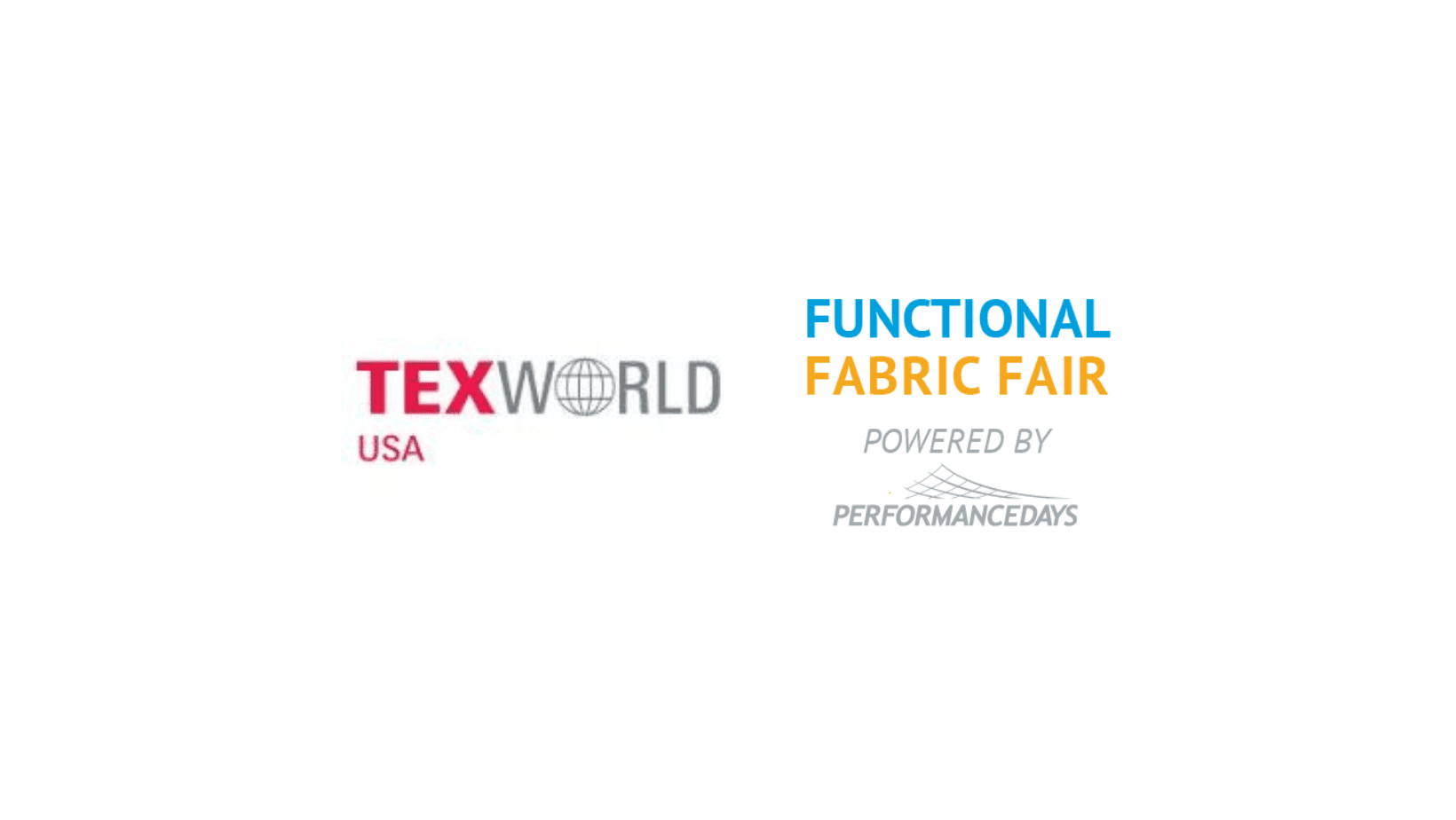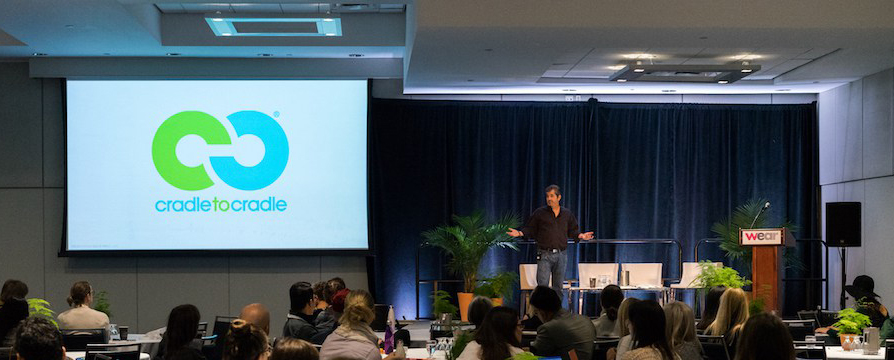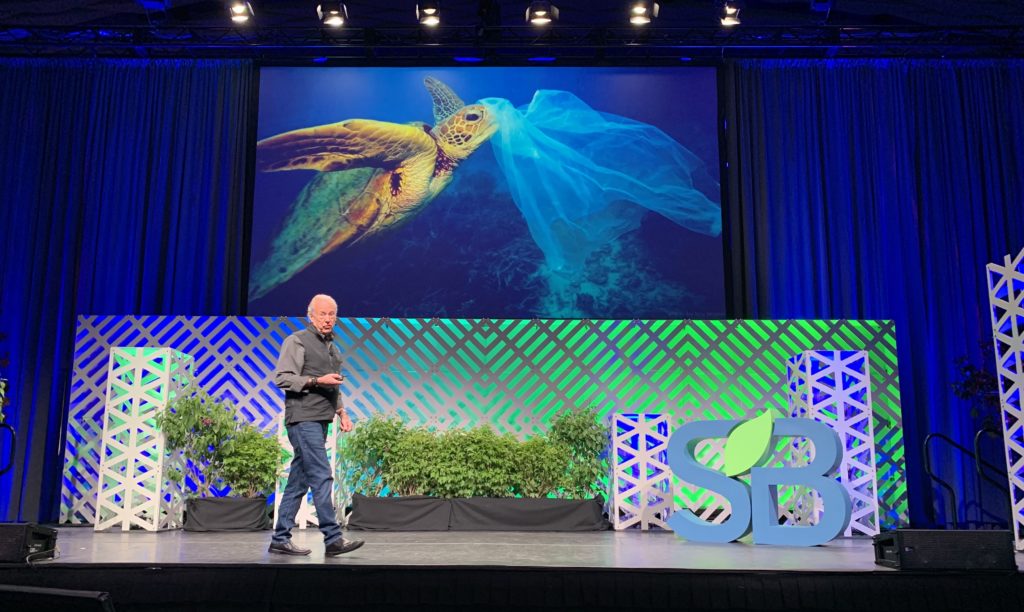Last month, MBDC Environmental Chemist Lauren Lieske and Senior Manager Kendall O’Shea attended the Texworld conference and the Functional Fabrics Fair at the Javis center in New York City. They each shared their takeaways of attending these events pertaining to their work in the green chemistry space.
What sparked your interest in attending the Texworld conference and Functional Fabrics Fair? How is it beneficial for those in the industry to attend these conferences?
Lauren: Texworld conference sparked my interest because the theme was on transparency in a brand’s supply chain and supplier sustainability. This was exciting for me because every day at MBDC, I work to create more transparency for brands working to understand the material health of their product. MBDC collaborates with clients and their supply chain to bridge existing gaps in their formulations. It’s important to our clients to identify where they can improve, and in our position, we are able to work with their suppliers and their proprietary data to find those areas.
The beauty about MBDC is that we can help improve the relationship between a brand and their supply chain. We see suppliers work to optimize their products to help brand names reach their goals. Transparency is valuable in order to ensure we are building towards a more sustainable product and it’s an important theme to be discussed by like-minded individuals. One of the other areas is working with brands to understand their facility data and working with them to develop strategies for protecting the climate. So, when Kendall and I realized the Functional Fabric Fair was adjacent and their theme was on carbon neutrality, we eagerly signed up. This included educational seminars that brought great insight into how to achieve sustainable and carbon neutral solutions.
For those working in the textile industry, these seminars addressed important themes such as using the digital space to design and reduce sample waste, reducing supply chain waste, working towards carbon neutrality through better farming practices and discussing what it means to be sustainable from different perspectives in the industry. For the sustainability industry to grow we need to work together now. Attending conferences with these types of themes is important in connecting and learning from one another as well as challenging each other to work on solutions and do our part.
Kendall: I always found the educational seminars informative and noticed there was always a theme of sustainability throughout the sessions. I thought the conference would be a great opportunity to meet companies in the textile and apparel industry who are striving to have better sustainability practices. As Lauren mentioned, once we got to the Javits center I realized that the Functional Fabric Fair was happening next door and thought it would be great to explore those vendors and educational sessions as well.
Who did you get the chance to meet and network with at each event?
Lauren: Kendall and I connected with lots of suppliers. At Texworld we were able to speak with representatives from Accelerating Circularity, Global Organic Textile Standard, Fab Fabrics, Lenzing, and Material Exchange. At the Functional Fabric Fair we connected with Land to Market, Polygiene, Moonlight Tech, Active Cashmere, HyDry and Sorona.
Kendall: As Lauren mentioned, we got to speak with a range of different companies, from product-based companies such as Moonlight Technology and Sorona, to different service companies such as Material Exchange and Land to Market. It was great to meet people from all different parts of the supply chain and industry in one venue.
What are some takeaways that you can bring back to your work at MBDC?
Lauren: I didn’t realize the digital space that exists for the textile market. It was really interesting learning about Material Exchange, Tengvia, and Texbase. Some of these technologies can be a useful tool to companies trying to assess the life cycle of their materials and I find that really powerful.
Kendall: The biggest takeaway for me is knowing that there are a lot of companies out there in the textile and apparel industry that are really trying to increase their sustainability efforts and are looking for help on how to meet their goal; this is really useful for MBDC as we can help companies with understanding what some of the best practices are in the different areas that Cradle to Cradle certification covers. We are able to provide resources and knowledge to these companies looking for help.
A key topic mentioned throughout these conferences is the need to use more recycled content and to design products that can easily be recycled. Part of our work is to help companies understand the different materials in their products and their potential next use options. This could involve helping them find similar materials with more recycled content or working with the client to develop a take-back program so that the product can stay within its nutrient cycle.
Another key area that Cradle to Cradle covers that was discussed in these conferences was the use of renewable energy and carbon management. MBDC can support companies on their missions to reduce their GHG emissions and can provide insight into the variety of ways a company can incorporate renewable energy into their manufacturing or everyday business. I also learned about some key policies and regulations that are currently being worked on that could have a major impact on companies in the future. For example, the New York Fashion Act would require a lot of companies in the apparel and footwear industry to learn more about their supply chain and manufacturing that they may not currently know. Under this act it will be necessary for companies to disclose a lot of information that at this time would be considered confidential.
What new innovations are you looking forward to?
Lauren: Developing infrastructure for recycling complex materials. In one of the education seminars at the Functional Fabrics Fair, there was a Panel that included Dr. Ruediger Fox (CEO of Sympatex Technologies) and Alexa Dehmel (Design Expert). Before this panel I was not fully aware of how the Green Deal impacts Product Circularity (one of the pillars in Cradle to Cradle). This was a big conversation piece for the panelist as one argued for designing towards simplicity (100% cotton) while the other pointed out the lack of creativity in that process. The goal in the EU is to be circular by the year 2030. This means technology needs to advance to hit this goal that is less than 8 years away. I found this panel to be insightful especially with the work that I do everyday. I imagine in the next 5 years there will be a noticeable shift in products designed with the intent to be circular, especially if they are marketed in the EU or from a supplier based out of the EU.
Kendall: I would agree with Lauren on this one. A lot of the educational seminars touched on the need for increased textile to textile recycling infrastructure and through the conversations I can tell that this topic and practice is really gaining momentum, which can help lead to the growth in the infrastructure. I’m especially excited to see the findings from all of Accelerating Circularity’s work.





